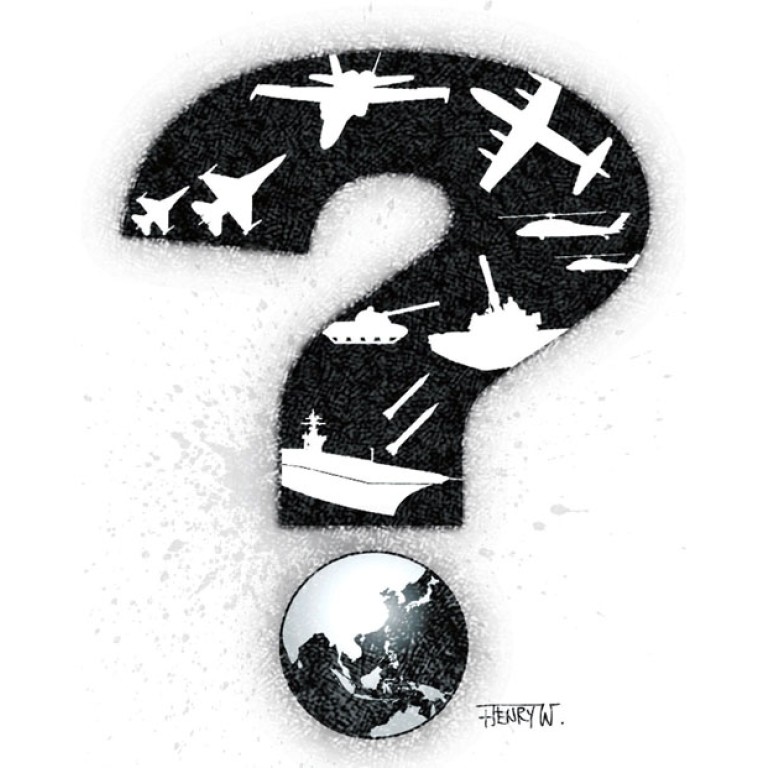
China is not Imperial Germany of the 21st century
Robert Dujarric says those who draw parallels between East Asia today and Europe in 1914 before the first world war often miss the critical differences. China is not Imperial Germany
Happy families are all alike; every unhappy family is unhappy in its own way," wrote Leo Tolstoy. The same might be said of peace and war (to invert the order of the author's most famous novel). Though there are multiple reasons for peace, to some extent all peaceful international environments are similar.
Every war, however, has unique characteristics, despite efforts to categorise them based on various parameters (causes, duration, geographic scope, endings and so on). Therefore, if a violent struggle erupts in Asia, it will not be a carbon copy of the first world war. Moreover, as Carl von Clausewitz wrote, war is highly unpredictable. Foreseeing how a major war in East Asia would be conducted and how it would end is more an exercise in astrology than in science.
But when observers draw parallels between East Asia today and Europe a century ago, they focus on how the first world war started rather than on how it ended. Sarajevo, not Versailles, is what attracts the attention.
Broadly speaking, these comparisons fall into two camps.
One is driven by what we could call the Sarajevo Axiom. It posits that the governments of all the great and smaller powers, countless disputes involving the Balkans and colonial claims, the alliance systems and a lack of understanding of how destructive war had become allowed the assassination of the heir to the crowns of the dual monarchy to escalate into the first world war.
Using this lens, many analysts look at East Asia and see disputes over the Senkaku islands - known in China as the Diaoyu Islands and in Taiwan as the Diaoyutai - the conflicting claims of China, Taiwan, and several Southeast Asian states in the South China Sea, Beijing's contention that it should control Taiwan, tensions between Beijing and Washington over incompatible interpretations of the law of the sea, disturbances in Xinjiang and Tibet and the continuing quasi-permanent crises involving North Korea.
When the alliances between the United States and its Northeast Asian partners (Japan, South Korea; and Taiwan under the Taiwan Relations Act) and Southeast Asian allies are added to the equation, these analysts see a great resemblance with Europe 100 years after the archduke's killing in Bosnia.
Despite superficial similarities, however, Asia in 2014 is not early 20th century Europe. Some of the most critical differences are as follows: First, the alliance structures are actually less flexible. In Europe, several European countries, such as Italy, were "in play", and, most importantly, the position of the world's largest economy (the US) was unclear, whereas in case of a "China versus US-and-allies" conflict, the battle lines are more clearly drawn.
Second, the nationalities question was critical in 1914 Europe. It undermined three large empires (Austria-Hungary, Russia, and Turkey), challenged Germany's eastern frontiers, and threatened most Balkan polities. In East Asia, most states are fairly cohesive.
Third, the key theatre of the first world war was on land, even though naval warfare also played a key role. In Asia, the relative importance of the maritime domain is larger, which has operational as well as political implications.
Another way of looking at the first world war focuses on Germany. It sees Berlin, or more accurately the leadership of the German army, as bearing most of the responsibility for the conflict. In particular, it blames German generals for failing to understand how military plans would bring Germany into conflict with the UK and ultimately the US, thus creating a world war that could not end quickly. Those who accept this analogy see China as the 2014 version of the German Empire.
Beijing has done much to convince many analysts of its bellicosity by its actions in the East China and South China seas. Yet, it is not Imperial Germany. Unlike 1914 Germany, it doesn't boast the world's best military nor is it the scientific and technological leader Germany was a century ago. Nor does it have any major allies, whereas Imperial Germany had several (though they may have been more of a liability).
Moreover, there was no clear ideological dividing line in 1914. Germany was not as democratic as France and Britain, but it was a far more liberal society than Russia, the major ally of the Western powers. In 2014, there is a clear ideological confrontation between the United States and China. It is not the root of the problem, but it has an enormous impact on the Sino-American relationship. Successive American presidents have not tried to effect regime change against the Chinese Communist Party, but American society is intrinsically anti-communist and as such is a threat to the Chinese political system. American support for the Dalai Lama, Chinese civil society organisations and dissidents illustrates this point.
There is, however, an interesting analogy between Beijing in 2014 and Berlin in 1914. In 1914, German policymakers could hope that the United States would not be drawn into the war against Germany. They could think that Britain would abstain from participating in a continental war.
The question now is whether the Communist Party leadership believes China could engage in military action in East Asia without drawing in the US. This is a critical question. If Beijing thinks that war without US participation is possible, it is more likely to strike than if it believes Washington would enter the fighting from day one.
